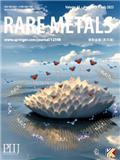
稀有金属(英文版)(Rare Metals) 知网万方目次维普目次
- CSCD
- 科核
- 高T1
- EI(中国2024)
- 主管单位:
中国科学技术协会
- 主办单位:
中国有色金属学会、有研科技集团有限公司
- 国际刊号:
1001-0521;EISSN1867-7185
- 国内刊号:
11-2112/TF
- 学科分类:
- 字数:
12000-58000
- 有无基金:
/有基金 100.0%
- 周期:
CN外文-月刊
- 特殊属性:
第一批认定学术期刊
- 电话:
010-82241917(202307期)
- 邮箱:
raremetals@grinm.com(202307期)
- 复合因子:
2.842
- 综合因子:
2.332
- 收录:
知网,万方目次,维普目次
- 级别:
CSCD,科核,高T1,EI(中国2024)
期刊简介
《稀有金属》期刊已被查看: 次
更新频次
单位占比
一作占比
/有基金-100.0%投稿指南
1、投稿方式:在线投稿。
2、刊内网址:(202307期)
http://www.springer.com/journal/12598
https://mc03.manuscriptcentral.com/rmet(投稿系统)
3、出刊日期:月刊,每月出版1期。
2023年8月10日星期四
《稀有金属(英文版)》投稿指南
【官网信息】
Submission guidelines
Instructions for authors
Single-blind peer review
This
journal follows a single-blind reviewing procedure. Authors are
therefore only requested to submit the full version including all author
names and affiliations.
Manuscript Submission
Submission
of a manuscript implies: that the work described has not been published
before; that it is not under consideration for publication anywhere
else; that its publication has been approved by all co-authors, if any,
as well as by the responsible authorities – tacitly or explicitly – at
the institute where the work has been carried out. The publisher will
not be held legally responsible should there be any claims for
compensation.
Permissions
Authors
wishing to include figures, tables, or text passages that have already
been published elsewhere are required to obtain permission from the
copyright owner(s) for both the print and online format and to include
evidence that such permission has been granted when submitting their
papers. Any material received without such evidence will be assumed to
originate from the authors.
Online Submission
Please
follow the hyperlink “Submit manuscript” on the right and upload all of
your manuscript files following the instructions given on the screen.
Please
ensure you provide all relevant editable source files. Failing to
submit these source files might cause unnecessary delays in the review
and production process.
Title Page
Please make sure your title page contains the following information.
Title
The title should be concise and informative.
Author information
The name(s) of the author(s)
The affiliation(s) of the author(s), i.e. institution, (department), city, (state), country
A clear indication and an active e-mail address of the corresponding author
If available, the 16-digit ORCID of the author(s)
If address information is provided with the affiliation(s) it will also be published.
For
authors that are (temporarily) unaffiliated we will only capture their
city and country of residence, not their e-mail address unless
specifically requested.
Abstract
Please
provide an abstract of 150 to 250 words. The abstract should not
contain any undefined abbreviations or unspecified references.
For life science journals only (when applicable)
Trial registration number and date of registration
Trial registration number, date of registration followed by “retrospectively registered”
Keywords
Please provide 4 to 6 keywords which can be used for indexing purposes.
Declarations
All manuscripts must contain the following sections under the heading 'Declarations'.
If
any of the sections are not relevant to your manuscript, please include
the heading and write 'Not applicable' for that section.
To be used for all articles, including articles with biological applications
Funding (information that explains whether and by whom the research was supported)
Conflicts of interest/Competing interests (include appropriate disclosures)
Availability of data and material (data transparency)
Code availability (software application or custom code)
Authors' contributions (optional: please review the submission guidelines from the journal whether statements are mandatory)
Additional declarations for articles in life science journals that report the results of studies involving humans and/or animals
Ethics approval (include appropriate approvals or waivers)
Consent to participate (include appropriate statements)
Consent for publication (include appropriate statements)
Please
see the relevant sections in the submission guidelines for further
information as well as various examples of wording. Please
revise/customize the sample statements according to your own needs.
Article Highlights
Please
provide three short bullet points (maximum of 120 characters each)
summarizing the key findings and implications of the paper. These should
be presented in non-technical language and not repeat verbatim text
found in the abstract. They should be placed beneath the abstract under
the heading of ‘Article Highlights’.
Text
Text Formatting
Manuscripts should be submitted in Word.
Use a normal, plain font (e.g., 10-point Times Roman) for text.
Use italics for emphasis.
Use the automatic page numbering function to number the pages.
Do not use field functions.
Use tab stops or other commands for indents, not the space bar.
Use the table function, not spreadsheets, to make tables.
Use the equation editor or MathType for equations.
Save your file in docx format (Word 2007 or higher) or doc format (older Word versions).
Headings
Please use the decimal system of headings with no more than three levels.
Abbreviations
Abbreviations should be defined at first mention and used consistently thereafter.
Footnotes
Footnotes
can be used to give additional information, which may include the
citation of a reference included in the reference list. They should not
consist solely of a reference citation, and they should never include
the bibliographic details of a reference. They should also not contain
any figures or tables.
Footnotes
to the text are numbered consecutively; those to tables should be
indicated by superscript lower-case letters (or asterisks for
significance values and other statistical data). Footnotes to the title
or the authors of the article are not given reference symbols.
Always use footnotes instead of endnotes.
Acknowledgments
Acknowledgments
of people, grants, funds, etc. should be placed in a separate section
on the title page. The names of funding organizations should be written
in full.
Scientific style
Please always use internationally accepted signs and symbols for units (SI units).
Please use the standard mathematical notation for formulae, symbols etc.:
Italic for single letters that denote mathematical constants, variables, and unknown quantities
Roman/upright
for numerals, operators, and punctuation, and commonly defined
functions or abbreviations, e.g., cos, det, e or exp, lim, log, max,
min, sin, tan, d (for derivative)
Bold for vectors, tensors, and matrices.
References
Citation
Reference citations in the text should be identified by numbers in square brackets. Some examples:
1. Negotiation research spans many disciplines [3].
2. This result was later contradicted by Becker and Seligman [5].
3. This effect has been widely studied [1-3, 7].
Reference list
The
list of references should only include works that are cited in the text
and that have been published or accepted for publication. Personal
communications and unpublished works should only be mentioned in the
text.
The entries in the list should be numbered consecutively.
If available, please always include DOIs as full DOI links in your reference list (e.g. “https://doi.org/abc”).
Journal article
Smith JJ. The world of science. Am J Sci. 1999;36:234–5.
Article by DOI
Slifka
MK, Whitton JL. Clinical implications of dysregulated cytokine
production. J Mol Med. 2000; https://doi.org/10.1007/s001090000086
Book
Blenkinsopp
A, Paxton P. Symptoms in the pharmacy: a guide to the management of
common illness. 3rd ed. Oxford: Blackwell Science; 1998.
Book chapter
Wyllie
AH, Kerr JFR, Currie AR. Cell death: the significance of apoptosis. In:
Bourne GH, Danielli JF, Jeon KW, editors. International review of
cytology. London: Academic; 1980. pp. 251–306.
Online document
Doe
J. Title of subordinate document. In: The dictionary of substances and
their effects. Royal Society of Chemistry. 1999.
http://www.rsc.org/dose/title of subordinate document. Accessed 15 Jan
1999.
Always use the standard abbreviation of a journal’s name according to the ISSN List of Title Word Abbreviations, see
ISSN.org LTWA
If you are unsure, please use the full journal title.
Tables
All tables are to be numbered using Arabic numerals.
Tables should always be cited in text in consecutive numerical order.
For each table, please supply a table caption (title) explaining the components of the table.
Identify
any previously published material by giving the original source in the
form of a reference at the end of the table caption.
Footnotes
to tables should be indicated by superscript lower-case letters (or
asterisks for significance values and other statistical data) and
included beneath the table body.
Artwork and Illustrations Guidelines
Electronic Figure Submission
Supply all figures electronically.
Indicate what graphics program was used to create the artwork.
For vector graphics, the preferred format is EPS; for halftones, please use TIFF format. MSOffice files are also acceptable.
Vector graphics containing fonts must have the fonts embedded in the files.
Name your figure files with "Fig" and the figure number, e.g., Fig1.eps.
Line Art
……
更多详情:
https://www.springer.com/journal/12598/submission-guidelines
上一篇:中国化学(英文版)(Chinese Journal of Chemistry)下一篇:油气藏评价与开发(原:勘探地球物理进展)
《稀有金属》同类冶金工业期刊
-
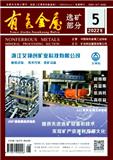
有色金属(选矿部分)
科核,高T2,高T3,武B+,CACJ-扩展
CN中文-月刊影响因子1.44
-

炼钢
北核,武A,高T3
CN中文-双月刊影响因子1
-
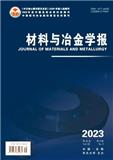
材料与冶金学报(原:沈阳黄金学院学报;黄金学报)
北核,高T3,武B+
CN中文-双月刊影响因子0.653
-
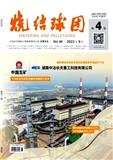
烧结球团(不收版面费审稿费)
北核,武A-,高T3,CACJ-核心
CN中文-双月刊影响因子0.962
-
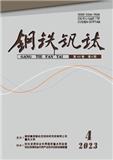
钢铁钒钛
北核,科核,武A-,高T2,CACJ-核心
CN中文-双月刊影响因子0.688
-
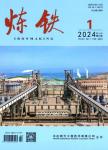
炼铁(不收版面费审稿费)
北核,高T3,武B+,CACJ-入库
CN中文-双月刊影响因子0.508
-
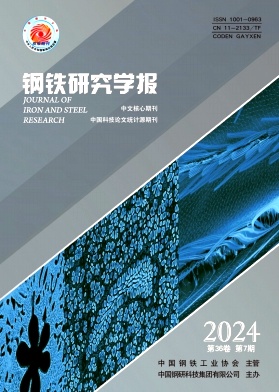
钢铁研究学报
北核,CSCD,科核,武A,高T2
CN中文-月刊影响因子1.498
-
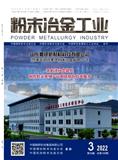
粉末冶金工业
北核,科核,武A,高T2,高T3
CN中文-双月刊影响因子1.057
常见问题
-
稀有金属杂志社官网、联系方式是什么?
稀有金属杂志社官网:http://www.springer.com/journal/12598
投稿网址:https://mc03.manuscriptcentral.com/rmet联系电话:010-82241917(202307期)
投稿邮箱:raremetals@grinm.com(202307期) -
稀有金属杂志是核心期刊么?
稀有金属是核心期刊,级别是:CSCD,科核,高T1,EI(中国2024), 是:冶金工业分类下的知网,万方目次,维普目次收录的期刊。
-
请问你们是稀有金属杂志社吗?
我们不是《稀有金属》杂志社。本站主要从事期刊信息展示与期刊推荐,不是任何杂志官网,直投稿件请联系杂志社。本站仅提供免费的学术指导、论文辅导、期刊投稿信息整理收集服务。
-
你们指导服务后可以保证文章被发表吗?
期刊发表的成功与否,主要取决于文章内容的质量。编辑老师会根据研究领域、创新性等多因素进行考量。我们会帮助您理解期刊的发表要求,助力提升发表几率,从而增加发表的机会。
-
晋级论文能否在报纸上发表?
在学术界,论文的发表往往被视为研究者职业发展的重要一环。晋级论文,即为了获得更高职称或学术地位而撰写的学术论文,通常需在专业期刊上发表。然而,许多人可能会问
